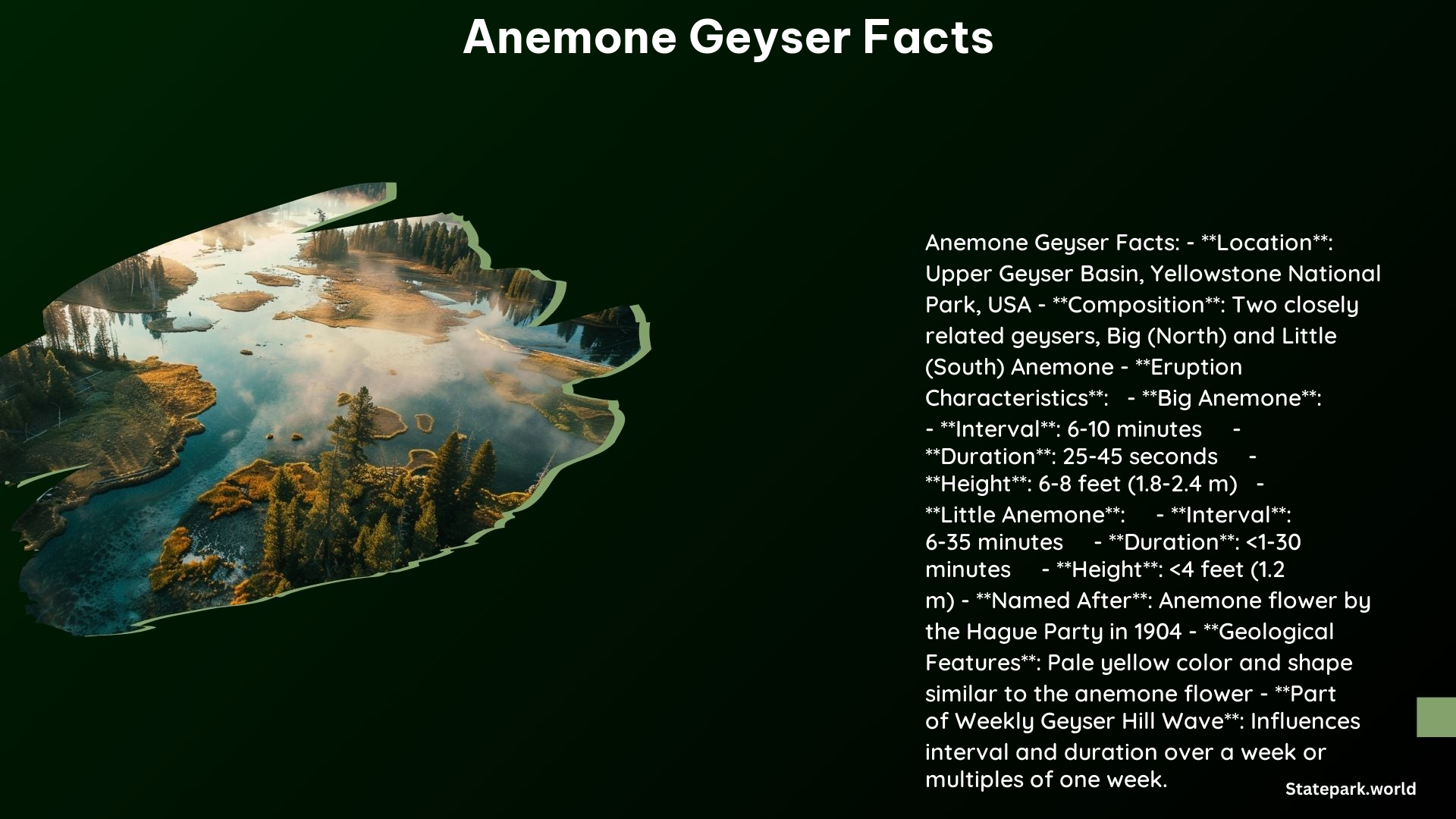Anemone Geyser is a unique geothermal feature located in the Upper Geyser Basin of Yellowstone National Park. It is actually two closely related geysers, known as Big or North Anemone and Little or South Anemone, which have distinct eruption patterns and characteristics.
Geology and Appearance
Anemone Geyser is named for its pale yellow color and shape similar to the anemone flower. The two vents, Big Anemone and Little Anemone, are connected and can influence each other’s behavior.
| Feature | Description |
|---|---|
| Composition | Anemone Geyser is actually two closely related geysers, known as Big or North Anemone and Little or South Anemone. |
| Appearance | Both vents have a pale yellow color and shape similar to the anemone flower, which inspired their name given by the Hague Party in 1904. |
Eruptions

The eruption patterns of the Anemone Geyser are quite unique and variable between the two vents.
Big Anemone
- Eruption Interval: 6 to 10 minutes
- Eruption Duration: 25 to 45 seconds
- Eruption Height: 6 to 8 feet (1.8 to 2.4 m)
Little Anemone
- Eruption Interval: 6 to 35 minutes
- Eruption Duration: Less than a minute to more than 30 minutes
- Eruption Height: Rarely more than 4 feet (1.2 m)
Connection and Behavior
The two Anemone Geysers are connected and can influence each other’s behavior. On occasion, Little Anemone can have near non-stop activity, causing Big Anemone to have very long intervals and weak eruptions.
Additionally, the Anemone geysers are part of the weekly Geyser Hill wave, which affects their interval and duration over the course of a week or multiples of one week.
Viewing and Safety
Anemone Geyser is located on the lower boardwalk of Geyser Hill in the Upper Geyser Basin. Visitors should stay on boardwalks and designated trails to avoid burns from hydrothermal water and ensure their safety.
Additional Information
- Temperature: Average temperature of 184.8°F (84.9°C)
- pH: Average pH of 8.9
- Conductivity: Average conductivity of 1935 uS/cm
References
- https://en.wikipedia.org/wiki/Anemone_Geyser
- https://yellowstone.net/geysers/geyser-list/
- https://naturalatlas.com/geysers/anemone-1516468
- https://yellowstonenaturalist.com/geyserwatch/ugb/ofgh/anemone-geyser/
- https://www.nps.gov/places/000/anemone-geysers.htm
